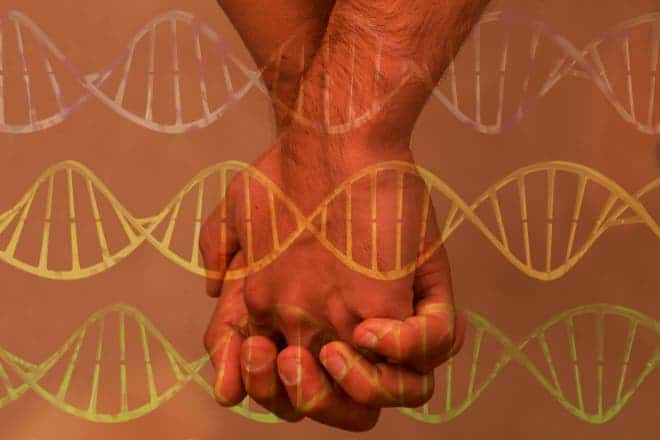Are homosexuals hard wired this way or merely the product of their environment? Some argue that its both, but whether or not there’s a ‘gay gene’ or more is up to debate. The fact that it’s such a delicate subject, i.e. hard to get funding, means that progress is slow. One could argue that it wouldn’t be worth researching anyway. If someone found a scientific causal-link, say some genes, that’s responsible for homosexuality than it’s possible to maybe reverse it. A ‘cure’ for homosexuality, if you will. Even this very prospect is enough to kill research out of politically correctness. At the American Society of Human Genetics (ASHG) in Baltimore, however, the audience might have been surprised to hear about the findings of a group from University of California (UC), Los Angeles that found there’s reasons to believe homosexuality is rooted in epigenetics. The authors are quick to caution that their findings are far from being the final word, and hence should be taken with a grain of salt.

One of the most famous studies on genetic homosexuality was made in 1993 by Dean Hamer, a molecular biologist at the time for the U.S. National Institutes of Health (NIH) in Bethesda, Maryland. His genomic study revealed that a specific stretch of the X chromosome called Xq28 holds a gene or set of genes that predispose a person to being gay. Because of his low study group comprised of only 38 pairs of gay siblings, and since other researchers couldn’t reproduce the work, the so-called gay gene was discarded from consideration and Hamer became a laughing stock. But last year, a new study that looked at the genetic makeup of a staggering 409 pairs of gay siblings (10 times Hamer’s sample size) reached the same conclusion. The Xq28 set of genes, however, doesn’t seem to stand scrutiny in view of studies on gay twins.
In light of all this, some believe epigenetics bears more influence. In epigenetics environmental factors cause genes to switch on or off, which in turn affects how cells function – all without causing modification to the DNA sequence itself. For instance, while still in the womb, a baby’s behavior could be altered later in life based on the stimuli it receives. Previously, researchers found it could be possible for methylated DNA regions to be passed on to offspring, from father to daughter or from mother to son. Specifically, epigenetic changes that alter testosterone sensitivity could make males more feminine and females more masculine, ultimately leading to same-sex attraction. But there has to be an explanation for it, otherwise nature wouldn’t allow it. That’s how it works usually. According to William Rice of the University of California Santa Barbara these epi-marks have proliferated because they are evolutionarily advantageous: They “protect fathers and mothers from excess or underexposure to testosterone,” but they may also cause homosexuality in opposite-sex offspring.
In this most recent work, Tuck Ngun of UC and colleagues studied the methylation patterns found in 140,000 regions in the DNA of 37 pairs of male discordant identical twins – one gay sibling and the other straight – and in 10 pairs of twins where both were gay. After discontinuing irrelevant factors, they found five regions in the genome whose methylation pattern was closely linked to sexual orientation. To test their findings, the researchers split the discordant sample into two groups. In the first, they tried to spot any methylation patterns that might be associated with sexual orientation. They then used these patterns to see if they could predict sexual orientation in the second group. This was successful 70% of the time, which is far from predictive but not entirely random either. For any significant conclusion, this should be replicated with a much larger sample size else we might get another Hamer case on our hands.


